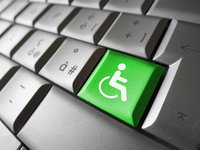Personal Mobility is changing, and we are approaching a period where our current concept of wheelchairs will feel as outdated as crossing the Atlantic by sailboat.
Two significant trends are emerging that will see the business of the provision of powered mobility aids being one that will be subject to significant disruption.
The first is obvious, more people are acquiring wheels. Every time I walk through a park, go to a mall or stroll along our seafront in Doha its remarkable to see how many people now use forms of powered mobility. People have always used wheels for personal mobility, bicycles, skateboards, skates have been available for many years. But in recent years these have been enhanced with powered solutions. It started with the Segway, beloved by city tours and security guards, the upright device can be found around the world, although it is perhaps not as ubiquitous as the “hoverboards” that emerged world wide as a toy and leisure activity over the past 18 months. As I walked through our local park a few weeks ago I dived for the grassed areas to avoid the youngsters on powered bicycles and they sped along the paving. Powered personal mobility is moving into the mainstream.
This may or may not be a good thing, as these devices become increasingly widespread they will increase the demand for environmental access to be considered. Curbcuts and accessible routes will be demanded by the new breed of mobility device users. However the increasing use of these by mainstream communities may lead to some areas being protected from “wheelies” so that those who walk are not put at risk of being mown down
But this trend is being contradicted by innovation by research and commercialization of exoskeletons, the technologies that enhance our current physical abilities and which can operate in a wider range of environments than any wheeled device can. It is not my intention to enter into the debate about where funding should be prioritized, towards environmental access adjustments or into research, I tend to believe that both are needed to provide for both current and future needs. I don’t accept the argument that human augmentation is necessarily simple an attempt to repair or “fix” the person, both wheelchairs and exoskeletons can be seen from within a social context, they are both technologies that provide a means by which needs are accommodated within the environment. There is a strong parallel with assistive technologies here. The user needs assistive technology (screen readers, keyboards, switches, joysticks etc) but also needs accessible content (websites, apps, ebooks etc). Within the built environment the user currently needs personal technology (wheelchair, scooter, smartcane) alongside an accessible environment, (curbcuts, ramps, tactile flooring). Access currently is dependent upon both factors interacting.
Increasingly it appears that the need for environmental change may fade, not overnight, not immediately, but over time. Instead we will see new technologies empowering the user to have control over their mobility in new ways. We should and can stimulate and embrace that shift but to do so at the cost of people currently living with a disability may be too great a cost.
Im 53 and part of an aging demographic, slowly my capacity for mobility will decline, but I suspect that one day a grandchild will sit on my enhanced knee and ask “tell me the story about how they made you sit, in a chair with wheels ! That must have been so funny!”
http://rewalk.com/rewalk-exoskeleton-puts-disabled-back-on-their-feet/
